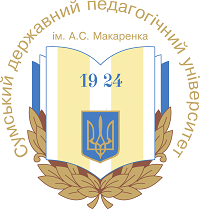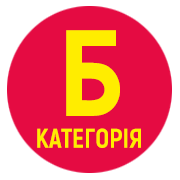THE RELATIONSHIP BETWEEN SPECIAL PHYSICAL TRAINING AND TECHNICAL SKILLS IN SPORTS DANCES
DOI:
https://doi.org/10.32782/olimpspu/2025.1.17Keywords:
sports dances, special physical training, technical skill, physical qualities, training processAbstract
The article examines the relationship between special physical training and technical skill in sports dances. Modern dance sports are developing dynamically, which increases the requirements for athletes not only in terms of musicality, ease and plasticity of performance, but also in terms of the level of their physical training. This problem becomes especially significant when mastering competitive programs, which requires the comprehensive development of physical qualities – strength, endurance, flexibility, coordination and speed, which ensure the performance of complex coordinated dance elements with maximum amplitude and accuracy. It was found that the technical skill of athletes-dancers directly depends on the level of their physical training, because the physical condition determines the possibility of implementing technically complex movements, jumps, turns and supports. In addition, a low level of physical qualities limits the range of dance elements, which negatively affects the performances and evaluations of judges. Success in sports dances is impossible without a high level of physical training, because its insufficiency directly affects technical skill and, accordingly, the results of performances.The conclusions emphasize the undeniable relationship between special physical training and technical skill in sports dances. It has been proven that a carefully planned training process harmoniously combines general physical and special exercises, contributes to the formation of hardy, strong, flexible and technically knowledgeable dancers. A comprehensive approach to training allows not only to increase the level of physical qualities, but also to improve the rhythm, coordination of movements and musicality of athletes. It is such balanced training that is the key to successful performances and stable sports growth of dancers.
References
Богданова М. В. Спортивний танець у системі бальної хореографії. Українська культура: минуле, сучасне, шляхи розвитку. 2014. Вип. 20. С. 214–217.
Калужна О. Фізична підготовка у тренувальному процесі спортсменів-танцюристів на етапі попередньої базової підготовки. Теорія і методика фізичного виховання і спорту. 2010. № 2. С. 12–16.
Лобан Т. Й. Анатомія танцю як складова у підготовці майбутнього хореографа. Актуальні питання культурології. 2018. Вип. 18. С. 83–87.
Мерлянова О. А., Василенко Ю. В. Виховання артистичності серед партнерів у спортивних бальних танцях та методологія розвитку видовищності. Young Scientist. 2018. № 11 (63). С. 197–201.
Осадців Т. П. Сучасні підходи, щодо підготовки юних танцюристів на етапі початкової спортивної підготовки (узагальнення досвіду тренерів зі спортивних танців). Молода спортивна наука України. 2004. Т.1.Вип. 8. С. 293–296.
Кандинський В. Про духовне в мистецтві. Київ. 1996. С. 181–220.
Хом’яченко О. Шляхи вдосконалення координаційних здібностей спортсменів-танцюристів, на етапі підготовки до вищих досягнень з урахуванням виду обраної спеціалізації. Теорія і методика фізичного виховання і спорту. 2018. № 4. С. 36–40.
Beardsley M. C. What Is Going On in a Dance? Dance Research Journal. 1982. № 15. рр. 31–72.
Guarino L. Is dance a sport? A twenty-first-century debate. Journal of Dance Education. 2015. № 15 (2). Рр. 77–80.
Pakes A. The Plausibility of a Platonist Ontology of Dance. Thinking Through Dance: The Philosophy of Dance Performance and Practices. 2013. Рp. 84–101.







